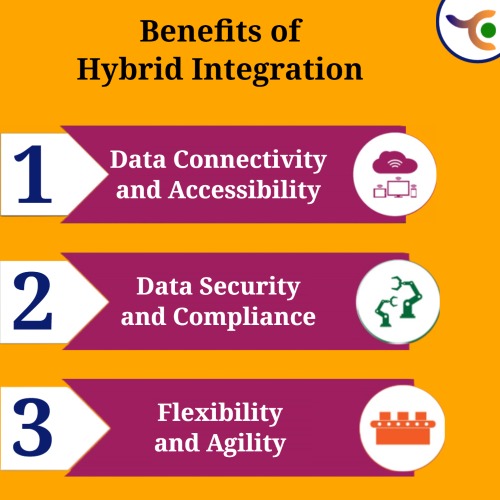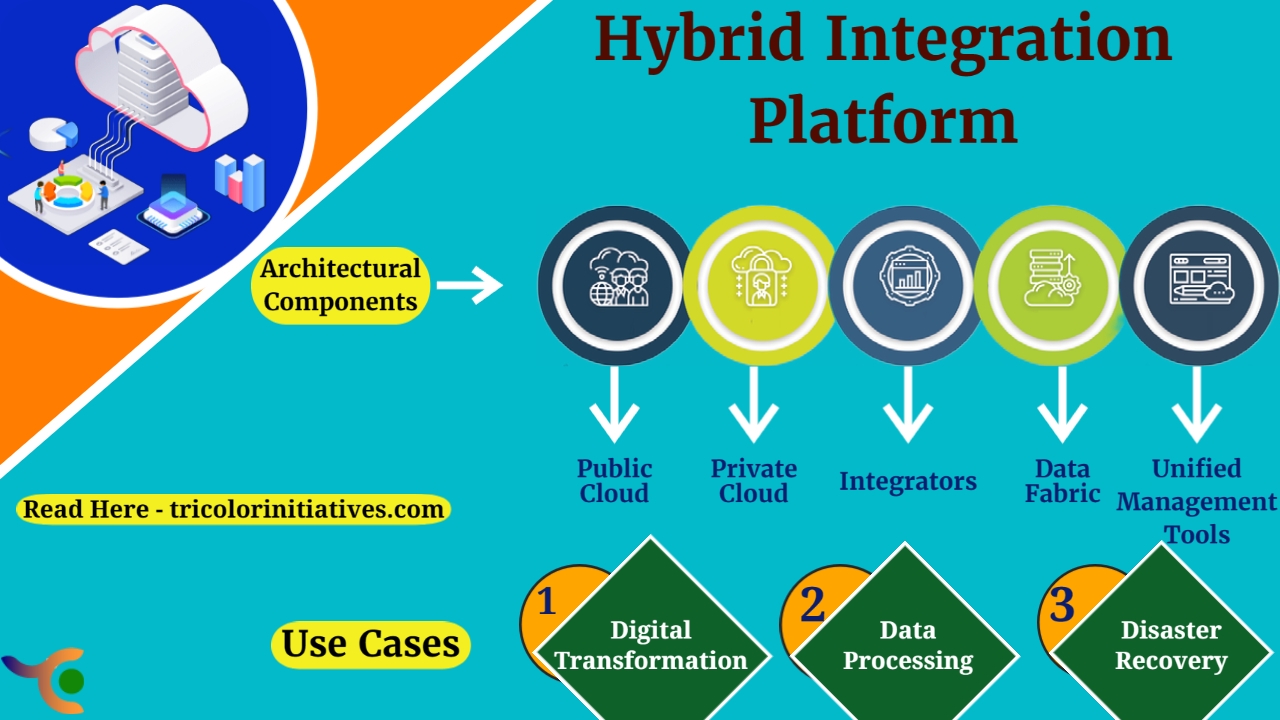Introduction
Accelerating digital transformation has become a paramount goal for organizations seeking to stay competitive in today’s rapidly evolving business landscape. MuleSoft’s hybrid integration platform has emerged as a powerful tool in this endeavor. By seamlessly connecting disparate systems, applications, and data sources, MuleSoft enables businesses to break down silos and create a unified digital ecosystem. This integration prowess allows organizations to streamline their operations, improve efficiency, and enhance customer experiences. MuleSoft’s hybrid approach, combining cloud-based and on-premises integration capabilities, offers flexibility and scalability to meet the unique needs of any organization.
Overview of Hybrid Integration:
Hybrid integration refers to the approach of seamlessly connecting and integrating applications, systems, and data across on-premises infrastructure and cloud-based environments. It combines the best of both worlds, leveraging the scalability, agility, and cost-effectiveness of the cloud while maintaining the security, control, and reliability of on-premises systems. This integration allows organizations to bridge the gap between legacy systems and modern cloud technologies, enabling a smooth transition to digital transformation while protecting existing investments.
Benefits of MuleSoft Hybrid Integration

Hybrid integration offers several benefits to organizations looking to accelerate their digital transformation efforts.
- Flexibility and Agility:
Firstly, it provides flexibility and agility by allowing businesses to leverage cloud services while retaining critical on-premises systems. This flexibility enables organizations to adapt to changing business needs and scale their operations seamlessly. - Data Connectivity and Accessibility:
Secondly, this integration enhances data connectivity and accessibility, enabling real-time information sharing across different systems and applications. This leads to improved decision-making, enhanced productivity, and a better customer experience. - Data Security and Compliance:
Additionally, this integration ensures data security and compliance by maintaining control over sensitive information while taking advantage of cloud-based capabilities. It also reduces integration complexity and costs by providing a unified platform to manage and govern integration processes across hybrid environments.
Key Components of MuleSoft Hybrid Integration:
MuleSoft’s hybrid integration platform comprises several key components that empower organizations to achieve seamless connectivity and integration.
- Anypoint Platform: The Anypoint Platform serves as the foundation, offering a unified environment to design, develop, and manage integrations. It includes the Anypoint Studio, which provides a graphical interface for building integrations, and the Anypoint Exchange, a repository of pre-built connectors and integration assets. The platform also features the Mule runtime engine, a lightweight integration engine that enables data transformation, routing, and orchestration.
- API-led connectivity: Additionally, this integration leverages API-led connectivity, allowing organizations to expose, manage, and consume APIs across hybrid environments. This API-led approach enhances agility, reusability, and self-service capabilities. Finally, MuleSoft provides robust security and governance features, ensuring data protection and compliance throughout the integration process.
Accelerating Digital Transformation with MuleSoft Hybrid Integration
This integration approach empowers organizations to stay competitive, drive innovation, and achieve their digital transformation goals in today’s rapidly changing business landscape. By leveraging hybrid integration, organizations can accelerate their digital transformation initiatives by enabling seamless data and application integration, establishing an agile and scalable infrastructure, and delivering an enhanced customer experience.
Seamless Data and Application Integration
This integration plays a crucial role in accelerating digital transformation by seamlessly integrating data and applications across on-premises and cloud environments. Moreover, by breaking down silos and enabling data connectivity, organizations can unlock the full potential of their data assets. Additionally, integration platforms, like MuleSoft, provide the tools and capabilities to harmonize data from different sources, ensuring consistency and accuracy. Furthermore, this seamless integration allows for real-time information sharing, improved collaboration, and data-driven decision-making, thus laying a strong foundation for successful digital transformation initiatives.
Agile and Scalable Infrastructure
Digital transformation requires an agile and scalable infrastructure to support the growing demands of a rapidly evolving business landscape. This integration provides organizations with the flexibility to leverage cloud services for scalability while retaining critical on-premises systems for control and security. This hybrid approach allows businesses to adapt to changing requirements, easily scale their operations, and handle fluctuating workloads efficiently. By leveraging cloud-based technologies, organizations can rapidly provision resources, automate processes, and achieve faster time-to-market, accelerating their digital transformation journey.
Enhanced Customer Experience
In today’s customer-centric era, enhancing customer experience is a top priority for organizations pursuing digital transformation. Furthermore, this integration enables businesses to create a unified and consistent customer experience across channels and touchpoints. By seamlessly integrating customer data from various systems, organizations gain a holistic view of customers, personalize interactions, and provide a seamless experience throughout the customer journey. With this integration, organizations leverage real-time data for personalized products, services, and recommendations, fostering customer loyalty and satisfaction.
Overcoming Challenges with MuleSoft Hybrid Integration
This integration brings numerous benefits, but it also presents some challenges that organizations must overcome to ensure a successful implementation. Let’s discuss some challenges:
Bridging On-Premises and Cloud Systems
One of the key challenges in this integration is bridging the gap between on-premises and cloud systems. Legacy systems often operate in on-premises environments, while modern applications and services reside in the cloud. Integrating these disparate systems requires a robust this integration platform like MuleSoft. With MuleSoft, organizations can establish seamless connectivity and communication between on-premises and cloud systems, enabling data exchange, process automation, and real-time integration. MuleSoft’s hybrid integration capabilities ensure that organizations can leverage the benefits of both on-premises and cloud environments while achieving a unified and scalable integration architecture.
Security and Compliance
Security and compliance are critical considerations when implementing hybrid integration solutions. Organizations must protect sensitive data while ensuring regulatory compliance. MuleSoft addresses these challenges by providing robust security features such as encryption, authentication, and access controls. Moreover, it enables organizations to implement secure data transfer and storage across hybrid environments. MuleSoft’s hybrid integration platform also supports compliance with industry standards and regulations, helping organizations meet data privacy and governance requirements. By incorporating security and compliance measures into the hybrid integration strategy, businesses can confidently embrace digital transformation without compromising data protection or regulatory obligations.
Data Synchronization and Consistency
Maintaining data synchronization and consistency across hybrid environments can be a complex task. With data residing in different systems and locations, organizations must ensure that information remains up-to-date and consistent across all platforms. MuleSoft’s hybrid integration platform offers robust data integration capabilities, enabling organizations to synchronize and harmonize data in real time. It provides features like data transformation, mapping, and validation to ensure data consistency and quality throughout the integration process. MuleSoft’s hybrid integration also enables data replication and synchronization between on-premises and cloud systems, ensuring that data remains consistent and accurate across the organization. By overcoming the challenge of data synchronization, organizations can make informed decisions, improve operational efficiency, and deliver enhanced customer experiences.
Best Practices for Implementing MuleSoft Hybrid Integration
Here are given best practices to lay a strong foundation for hybrid integration projects. Drive alignment between technology and business goals, and achieve seamless connectivity and integration across on-premises and cloud systems.
Proper Planning and Assessment
A crucial best practice for implementing hybrid integration is to conduct proper planning and assessment. Furthermore, organizations should thoroughly evaluate their existing systems, applications, and integration requirements to determine the most suitable hybrid integration approach. This involves assessing the compatibility of on-premises and cloud systems, identifying integration points, and understanding data flows and dependencies. Additionally, by conducting a comprehensive analysis upfront, organizations can design an effective integration strategy and select the appropriate integration tools and platforms like MuleSoft to meet their specific needs.
Collaboration between IT and Business Teams
Successful hybrid integration implementation requires strong collaboration between IT and business teams. IT teams possess technical expertise, while business teams understand the specific integration requirements and objectives. Close collaboration ensures that the integration solution aligns with business goals, addresses critical pain points, and delivers the expected outcomes. Business teams should actively participate in the design, testing, and validation phases of the integration project to ensure that it meets their operational and customer-centric needs. Additionally, this collaborative approach fosters a shared understanding and ownership, leading to a more successful implementation.
Ongoing Optimization and Monitoring
Implementing hybrid integration is not a one-time activity but an ongoing process. It is crucial to establish mechanisms for continuous optimization and monitoring. Moreover, organizations should regularly review and refine their integration architecture, identifying opportunities for streamlining processes, enhancing data quality, and improving performance. Additionally, monitoring the integration flows, tracking key performance indicators, and addressing any issues or bottlenecks promptly is essential for maintaining a robust and efficient hybrid integration environment. By embracing an iterative approach and continuously optimizing the integration landscape, organizations can ensure the long-term success of their hybrid integration initiatives.
Conclusion
In conclusion, the importance of digital transformation and hybrid integration cannot be overstated in today’s business landscape. As organizations strive to remain competitive and meet evolving customer expectations, digital transformation becomes imperative. Additionally, MuleSoft’s hybrid integration platform plays a crucial role in accelerating this transformation journey. By seamlessly connecting on-premises and cloud systems, MuleSoft empowers organizations to break down silos, improve operational efficiency, and enhance customer experiences.
Recap of the importance of digital transformation and MuleSoft hybrid integration
In recap, hybrid integration is a vital enabler of digital transformation, providing organizations with the flexibility, scalability, and connectivity required to succeed in today’s digital age. Moreover, by embracing this integration and leveraging platforms like MuleSoft, organizations can overcome integration challenges, enhance collaboration, optimize performance, and realize the full potential of their digital transformation initiatives.
How TCI leverages MuleSoft hybrid integration to accelerate digital transformation
Get ready to boost your digital transformation journey. Embrace the power of hybrid integration with TCI to unlock new possibilities for your business. By leveraging MuleSoft’s hybrid integration platform, you can seamlessly connect your on-premises and cloud systems, break down data silos, and create a unified digital ecosystem. Take advantage of the flexibility, scalability, and enhanced connectivity that this integration offers. Streamline your operations, improve efficiency, and deliver exceptional customer experiences. Don’t let integration challenges hold you back—leverage hybrid integration to drive innovation and gain a competitive edge. Contact TCI today and embark on your digital transformation with confidence. Together, we can transform your business for the digital age.


